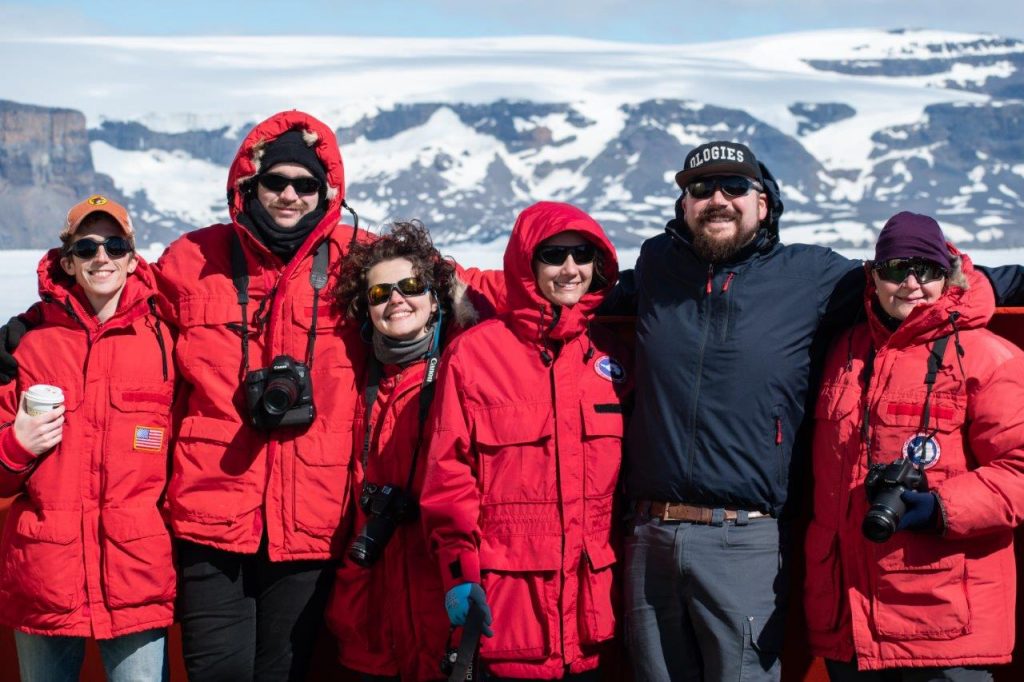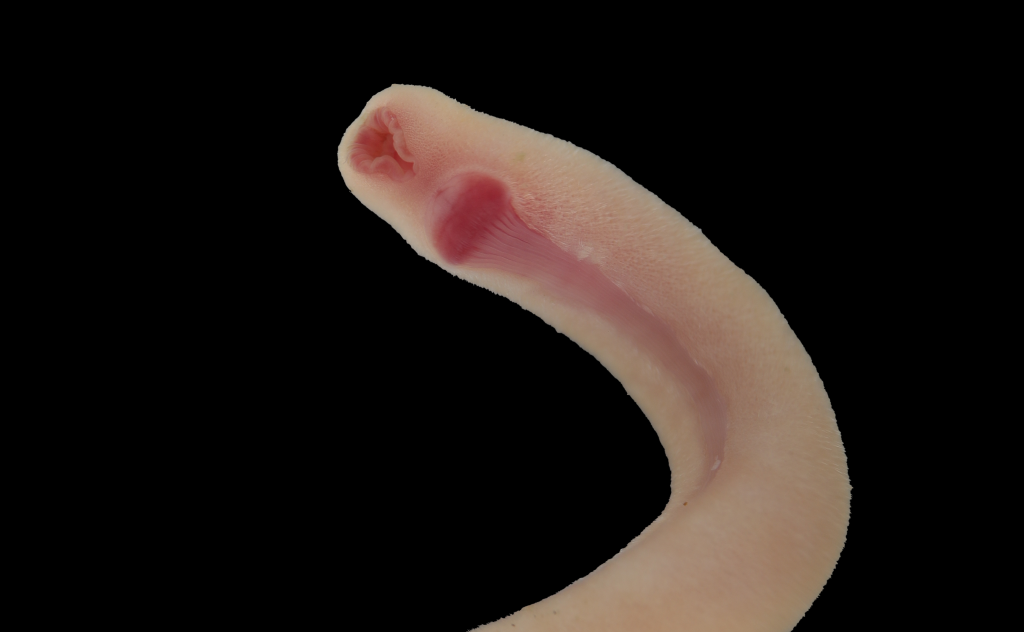Antarctica is a remote and challenging place to study, but the cold waters surrounding the southern-most continent are home to rich and diverse communities of marine animals. In fall 2020, a team of researchers co-led by Dr. Kevin Kocot in the Department of Biological Sciences traveled to the bottom of the Earth on the Research Vessel / Ice Breaker Nathaniel B. Palmer to sample marine invertebrates living in waters off Antarctica. The overarching goal of this research, funded by the National Science Foundation, is to help improve understanding of the biodiversity and evolutionary history of marine invertebrates living in Antarctic waters.
Dr. Kocot’s team (see photo) focused on a poorly understood group of marine molluscs called Aplacophora. These unusual animals (see photo) look more like worms than other molluscs such as snails, clams, or squids. Despite their strange appearance, many species are ecologically important members of deep-sea and polar animal communities, but there are only a handful of researchers worldwide who study them. Dr. Kocot’s team sampled animals using trawls and corers and spent most of their time in the lab sorting and imaging specimens under the microscope and preserving specimens for both morphological and genetic studies.
Conducting field work in remote places like Antarctica always presents challenges, but the COVID-19 pandemic made this field work especially complex. The team left home on September 20th and quarantined in a hotel in San Francisco. After a negative COVID test, they boarded the RVIB Nathanial B. Palmer, for a two-week quarantine onboard the ship. After the two weeks had passed and everyone tested negative for COVID-19, the ship steamed south. Transit from California to Punta Arenas, Chile took 25 days. After that time, supplies were loaded onto the ship and the team continued to Antarctica.
Ship-based research is intense. The ship operates 24 hours a day with two teams that each work 12 hours a day. When the opportunity arose to step away from the microscope, the team got to experience what are arguably some of the most beautiful sights in the world including breathtaking sunrises that start at 2 AM, huge icebergs, and lots of mountains (see photo). Thanks to support from the US Antarctic Program, the ship’s crew, and the National Science Foundation, the expedition was a success and the Kocot lab will be working on the samples they collected until their next expedition to the Eastern Antarctic, which is scheduled for March 2022.
To learn more about the project, visit its website at www.icyinverts.com.


